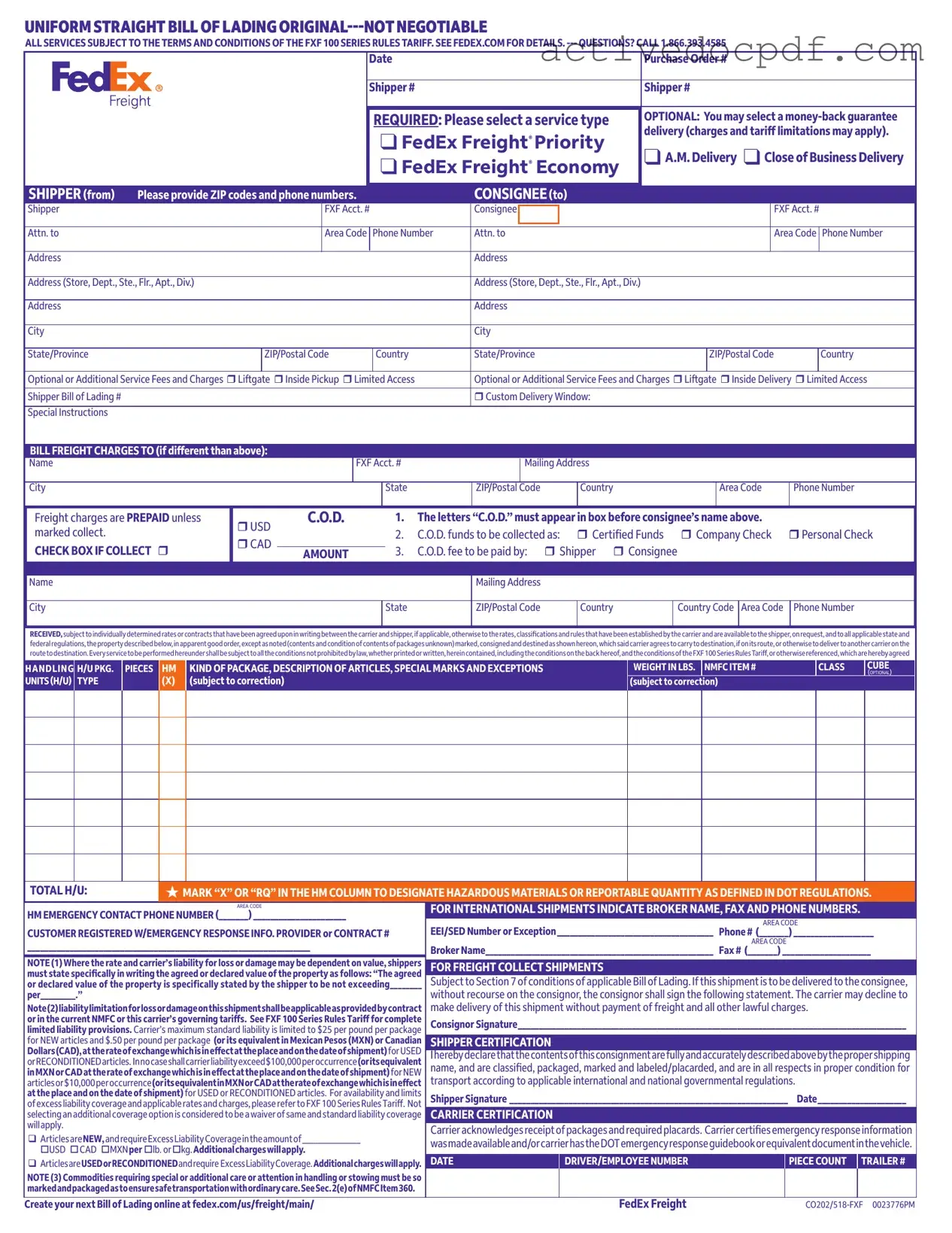What is a FedEx Bill of Lading?
A FedEx Bill of Lading is a legal document that serves as a receipt for goods being shipped. It outlines the terms and conditions of the shipment and includes details such as the shipper's and consignee's information, service type, and freight charges. This document is essential for tracking the shipment and ensuring that all parties are aware of their responsibilities.
To complete the form, you need to provide specific information:
-
Shipper and consignee details, including names, addresses, and contact numbers.
-
Service type selection, such as FedEx Freight Priority or Economy.
-
Freight charges, indicating whether they are prepaid or C.O.D. (Collect on Delivery).
-
Details about the items being shipped, including weight, kind of package, and any special instructions.
Make sure to review all entries for accuracy before submitting the form.
What does "C.O.D." mean on the Bill of Lading?
"C.O.D." stands for Collect on Delivery. This means that the recipient (consignee) will pay for the shipment upon delivery. If you choose this option, you must specify the payment method and indicate who will pay the C.O.D. fee—either the shipper or the consignee.
What should I do if my shipment contains hazardous materials?
If your shipment includes hazardous materials, you must mark the appropriate box on the Bill of Lading. Additionally, you need to ensure that the items are packaged and labeled according to federal regulations. Providing emergency contact information is also crucial for safety purposes.
What is the significance of the freight charges being "PREPAID"?
When freight charges are marked as "PREPAID," it indicates that the shipper has already paid the shipping costs before the package is sent. This arrangement can help avoid complications at the time of delivery, as the consignee will not need to handle payment upon receipt of the shipment.
Can I select additional services on the Bill of Lading?
Yes, the FedEx Bill of Lading allows you to select additional services. Options may include liftgate service, inside pickup or delivery, and limited access. These services may incur extra charges, so be sure to review the fees associated with each option.
What happens if my shipment is lost or damaged?
If your shipment is lost or damaged, you may be entitled to compensation based on the carrier's liability limits. The standard liability is usually limited to $25 per pound for new articles. If you wish to declare a higher value, you must do so in writing on the Bill of Lading. It's essential to keep all documentation related to the shipment to support any claims.
For detailed information regarding the terms and conditions that apply to the FedEx Bill of Lading, you can visit the FedEx website at
fedex.com
. The FXF 100 Series Rules Tariff contains all relevant policies, rates, and limitations associated with your shipment.
If you have any questions or need assistance with the Bill of Lading, you can call FedEx customer service at 1.866.393.4585. Their representatives can provide guidance and help resolve any issues you may encounter.
